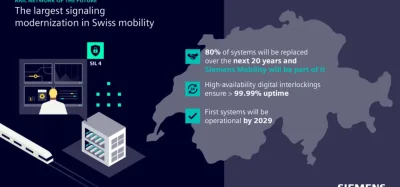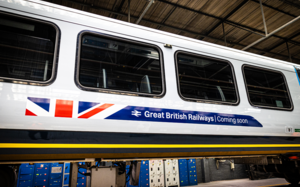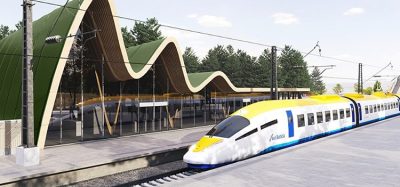The FIF in the new French railway environment
Posted: 27 November 2012 | | No comments yet
My article in Global Railway Review Issue 6 2011 outlined the prospect of a French railway system reform. This subject is still at the forefront of discussions within the industry and so constitutes the main topic of this article.
This agenda must be viewed against the backdrop of a very tough economic climate and of a new political landscape created by the election of a new President of the Republic, a new government and a new parliamentary majority.
Since taking office, the newly-appointed ministerial teams have initiated a review of the planned major transport projects (including railway-related projects) which will impact the regeneration of the country.
The government has confirmed its determination to unveil the main guidelines of the necessary and eagerly-awaited reform of the French railway system. As a result, the French railway industry, and of course the FIF, are challenged by a new situation of crucial importance for the sector’s future.
The reassessment of the major rail transport infrastructure projects will be a decisive factor for the next 30 years.
My article in Global Railway Review Issue 6 2011 outlined the prospect of a French railway system reform. This subject is still at the forefront of discussions within the industry and so constitutes the main topic of this article. This agenda must be viewed against the backdrop of a very tough economic climate and of a new political landscape created by the election of a new President of the Republic, a new government and a new parliamentary majority. Since taking office, the newly-appointed ministerial teams have initiated a review of the planned major transport projects (including railway-related projects) which will impact the regeneration of the country. The government has confirmed its determination to unveil the main guidelines of the necessary and eagerly-awaited reform of the French railway system. As a result, the French railway industry, and of course the FIF, are challenged by a new situation of crucial importance for the sector’s future. The reassessment of the major rail transport infrastructure projects will be a decisive factor for the next 30 years.
My article in Global Railway Review Issue 6 2011 outlined the prospect of a French railway system reform. This subject is still at the forefront of discussions within the industry and so constitutes the main topic of this article.
This agenda must be viewed against the backdrop of a very tough economic climate and of a new political landscape created by the election of a new President of the Republic, a new government and a new parliamentary majority.
Since taking office, the newly-appointed ministerial teams have initiated a review of the planned major transport projects (including railway-related projects) which will impact the regeneration of the country.
Join our free webinar: Rail cyber-security in a time of technological and regulatory transformation
Join our expert panel, including speakers from Nokia and Siemens Mobility, to explore the critical convergence of cybersecurity and 5G rail comms.
Date: 3 Dec | Time: 15:00 GMT
Can’t attend live? No worries – register to receive the recording post-event.
The government has confirmed its determination to unveil the main guidelines of the necessary and eagerly-awaited reform of the French railway system. As a result, the French railway industry, and of course the FIF, are challenged by a new situation of crucial importance for the sector’s future.
The reassessment of the major rail transport infrastructure projects will be a decisive factor for the next 30 years.
Among the projects with a regeneration impact are those contained in the National Infrastructure Master Plan (SNIT) and the ‘Greater Paris’ project, not to mention the new investment package for public transport on dedicated infrastructure (TCSP).
With regard to the SNIT and beyond, at the capacity of the public authorities concerned to raise over €140 billion to source 18 highspeed lines (HSL) by 2030, these projects will need to be clearly graded in order of urgency, and then prioritised.
Where the Greater Paris project is concerned, the on-going review will address its underlying concept (rapid-metro solution preferred to a train option), its sheer physical scale (10 tunnels to be bored simultaneously), its budgetary implications (investment worth some €30 billion), plus the implementation timescales.
Given the strategic nature of these different projects, the FIF has been quick to submit its analysis of the issues at stake, plus its proposals, to the public authorities and the media.
The FIF view is that the SNIT programme should qualify for an early clarification of priorities and of resources to be deployed in the interest of our future rail transport infra – structure schemes.
The FIF is also pressing the public authorities to develop a suitable methodology for rating the socio-economic priorities and grading the capacity of the infrastructure projects announced to respond to these priorities.
Consistent with the spirit of the British ‘masterplan’ for railways, it has been proposed that over the next six months the public authorities should produce a notional long-term programme coupled with a five-year plan for consideration by Parliament in the form of a planning law.
The FIF wants the new transport infrastructure plan to be reviewed through an approach that is not only much more selective, but also much more intermodal, as well as ‘European’ in its concept. In terms of the Greater Paris project where the initial investments (worth some €1 billion) have been deferred by one year, the FIF argues that the overall project is pertinent and that the two issues to be revisited are the implementation timescales and the investmentfunding formula.
The other key topic is concerned with the reform of the French railway system.
Interestingly, the on-going debate on this subject in France revolves around the ‘Bundling versus Unbundling’ issue.
For the FIF, the main concern centres much more on the capacity of the future French railway system to re-energise the investment effort put into the different segments (freight, high-speeds, intercity trains, TERs…), sustained by significantly enhanced system performance levels.
Feedback from the railway reforms set in place since the mid-90s clearly shows that there simply cannot be a one-size-fits-all model, but rather a variety of solutions and organisational plans liable to produce optimum economic and technico-financial outcomes and, even more importantly, achieve customer satisfaction.
This holds true for countries like Great Britain, Sweden, Germany and Spain where the organisational and governance options taken diverge from one another.
The policy options taken in France since 1997 have translated into decisions that depart from those of neighbouring countries:
- With Infrastructure Manager RFF delegating governance of the national rail network to SNCF
- With the SRU 2002 legislation turning all the regions (apart from the Ile-de-France region) into rail transport organising authorities (AOT)
- With the opening-up of the freight market to competition in 2006 on the national rail network.
Despite the re-invigoration of regional transport activities and notwithstanding the advent of new rail freight operators, the French rail system, 15 years on, finds itself in far-worse physical, financial, economic and budgetary circumstances compared with the critical situation in 1997.
Bearing in mind that SNCF and RFF together post an aggregate debt of €38 billion and that the annual operating/capital subsidy exceeds €15 billion, and also that the funding requirement represents some €2 billion annually, the French rail system is clearly heading straight for implosion. The FIF has highlighted the dire and highly-damaging consequences of this situation for public investments, as observed in most rail transport segments.
Whilst the French railway manufacturing market today accounts for a €4 billion turnover, the main concern going forward is that the present trend, unless reversed, risks translating into a 20-30% market drop. In fact, the needs expressed by the regions and territories in particular are more massive than ever before (infrastructure modernisation, adequate freight-train paths, new TER and Intercity trains…), and yet the State/Regions/SNCF are no longer in a position to source them. At the same time, the particularly unfavourable European economic, financial and budgetary environ – ment, whose impact is mostly felt in France, should not be allowed to conceal the need for and urgency of an in-depth reform of the French railway system.
The FIF looks forward to an early unravelling of the situation as this will enable public investors to respond in optimum manner to this demand for ‘more rail transport’, as very consensually agreed at the 2009 Grenelle Transport Summit.
These problems cannot expect to be solved solely at national level – some of the answers have a European dimension to them. By the same token, responsibility for some of the measures that need taking and decisions that need making lies squarely with the French Public Authorities.
The FIF has proposed that the State considers reinstating power to the regions to invest in rail transport and to the local communities the tools for continuing their investment effort in favour of tramway transport.
The FIF also wants the State, as part of the French rail-system reform process, to create proper conditions to the development of a more dynamic rail freight sector, particularly by promoting local initiatives in the form of shortline operators.
Finally, the FIF is keen for the State and SNCF to be more proactive in efforts to re-energise the high-speed rail business, where success in the medium-term necessarily depends on two factors, namely the national HSL investment choices for which the SNIT is responsible, and adaptations to the train-path charging regime.
To complete the picture, changes in the French rail system must also translate into meaningful productivity gains which, in the short-term, can be achieved through implementation of a robust and more efficient network-maintenance and line-building policy. The FIF initiative which prompted the creation of a tripartite working party involving SNCF, RFF plus industry and track builders is meant to serve this very purpose.
The aim of this working party is to significantly drive costs down and facilitate major productivity gains through proper works planning, coupled with simplification and rationalisation of the processes and procedures underpinning the organisational methods applied to these activities. Given that investments in new HSL projects and conventional-rail modernisation schemes represent an outlay of some €4 billion annually, the end-game would be to trim at least 10 to 20% off existing expenditure, so releasing productivity margins which ultimately translate into cost savings and higher investment levels.
These are the main issues on which the FIF attention and action are focused – namely reform of the French railway system, deployment of a railway infrastructure investment plan within the framework of a ‘revamped’ SNIT, re-energisation of rolling-stock investments by the State/Regions, productivity plan for line building and network upgrading.
Together they represent decisive challenges for the future of railway activities in France, and the FIF will resolutely be addressing them over the coming months to ensure that a sustainable railway business-case does indeed exist across our territory.
About the author
Jean-Pierre Audoux is a Doctor in International Economics and is also a graduate in Macro-economics. In 1996, Jean-Pierre was appointed the new Director General of FIF after a 15-year career in various governmental depart – ments including Ministry of Industry, the Defence Ministry and the Prime Minister’s office. Jean-Pierre is also the author of books on geo-economics and of numerous articles on the railway sector. For many years Jean-Pierre has also been an Associate Professor in economics in advanced studies at colleges such as the Paris College of Commerce, the Saint-Cyr Military Academy and the International Public Administration Institute.
Global Railway Review Autumn/ Winter Issue 2025
Welcome to 2025’s Autumn/ Winter issue of Global Railway Review!
The dynamism of our sector has never been more apparent, driven by technological leaps, evolving societal demands, and an urgent global imperative for sustainable solutions.
>>> Read the issue in full now! <<<








